One of the pleasures of boating, at least for me, is reading boat names! I enjoy the many humorous names and those that are a play on words. In many cases, they certainly provide a glimpse into the owner’s personality. Or, as in my case, Aquaholic, reveals my addiction to all things related to water sports and activities.
Something I do notice often is the size of the lettering. Some letters are so small, it would be hard to read from 50 yards away or more. As a result, hailing or identifying the boat becomes challenging. I remember reading many years ago that the best minimum letter height is 4 inches, which makes it readable from a good distance.
The nice thing about applying your boat name is that it is very easy to do and does not require any special skills or tools. Plus, finding a vinyl sign maker near you is super easy. Yes, you can also order online. But if you can, support your local sign maker. Most will have outdoor UV resistance vinyl material in a huge choice of colours. You can also have fun playing with the letter size, font design and colour, as sign makers offer a vast selection and, in most cases, can make custom changes.
I advise that you order extra letters so you can make repairs without having to order from scratch. This is what prompted the idea for this article and YouTube video. I had one letter that was damaged on the port side. Thankfully, when I initially ordered my signage, I added two extra ones of each size. I have a smaller letter size on the stern.
Luckily, I was able to easily replace the damaged letter.
Here is the step-by-step process and list of what you will need. I also created a YouTube video.
To install your vinyl lettering, you will need the following items:
- Acetone
- 50% rubbing alcohol / water solution
- A plastic spatula
- Soapy water (Joy or Dawn are best in my book) or Windex
- Lint free paper towels
If you are removing existing lettering to change the name or for a repair, you will also need:
- Large masking tape
- Hairdryer or heat gun
- Scraper or straight edge type razor blade
If you are adding a new name on a blank area, skip to step 4.
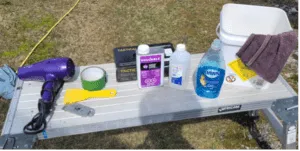
Step 1: If replacing or removing only a section, apply the large masking tape in a way that it will deflect the heat from the hairdryer away from the adjacent letters.
Step 2: Using the hairdryer and straight edge razor blade, heat up the surface and slowly scrape or peel away the vinyl. Once removed, you will be left with the residual adhesive from the vinyl.
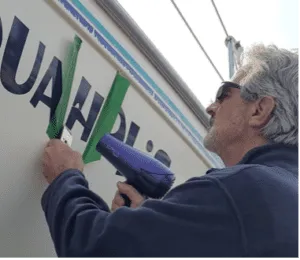
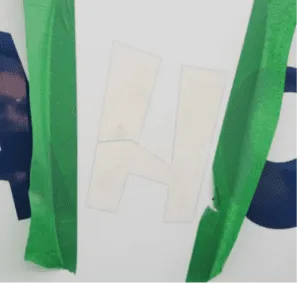
Step 3: Using a little acetone and a lint free towel, wipe away the residual adhesive being extra careful not to touch the adjacent letters.
Step 4: Once the residual glue is gone, clean the surface with the alcohol solution to clean the area as well as neutralize the acetone.
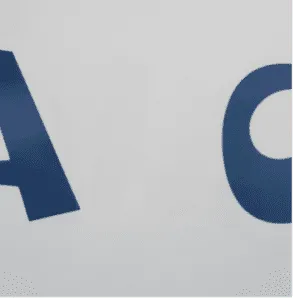
Step 5: Set the boat name or letter in place using a piece of masking tape on both ends. Take time to step away and see how it looks from a distance and adjust until you like it. Now keep the sign or letter in place with a long piece of masking tape along the top edge to act as a hinge. Then, flip the sign or letter up.
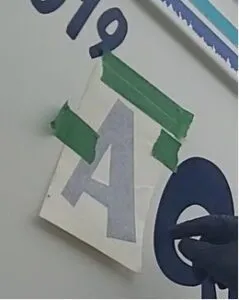
Step 6: Apply soapy water or Windex and, using a rolling motion, slowly roll down, removing the backing paper at the same time until the sign or letter is in place.
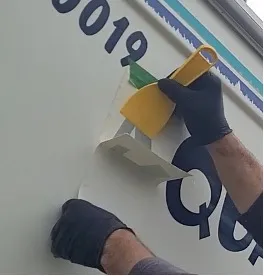
Step 7: Using the plastic spatula, squeegee the excess soapy water or Windex out, taking care to squeeze out any air pockets. Once in place, peel away the top protective paper pulling straight down slowly so as not to pull the letter(s) off. Gently wipe the area dry and you’re done!
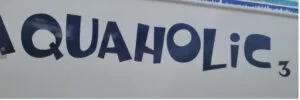
IMPORTANT: Do not touch, wipe, wash or apply wax for at least two or three days. Wax will coat the letter and prevent the adhesive from curing properly.
Job completed in less than 30 minutes.
Now my next job, as you can see from the images, will be to replace the vinyl stripes along the hull, below the gunwales… A longer job time wise, but it is the same process.
































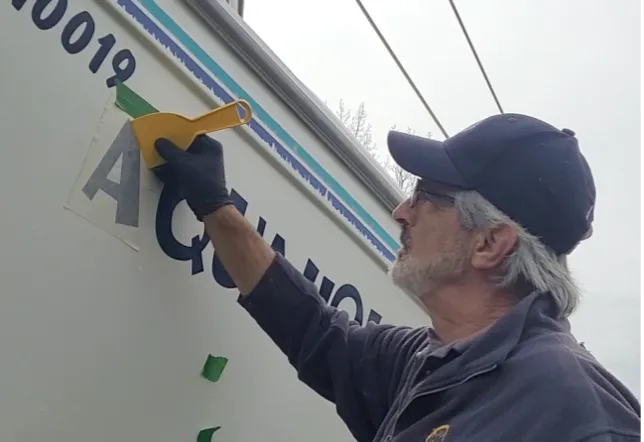





where is info on how to clean SS tubing on sailboats (product, how, etc.)?
Hello Clubmech, I have not yet done a video or article on cleaning SS. However, I can tell you that I use Barkeeper’s Friend in liquid form on all SS onboard. For stubborn areas, I use NEV’R DULL.
Excellent article. It’s might be easier up front to get the whole name printed rather than individual letters . Every time I use individual letters they look ok to me but others are happy to point out. If the decals are hard to remove, ..usually after 5 years you might need a rubber decal remover that fits in your drill . After removal of old decal lightly compound area. Some sun shading will likely still be seen but will fade over the next few months.
Finally I like the 3M reflectorized but it costs 2x other brands.